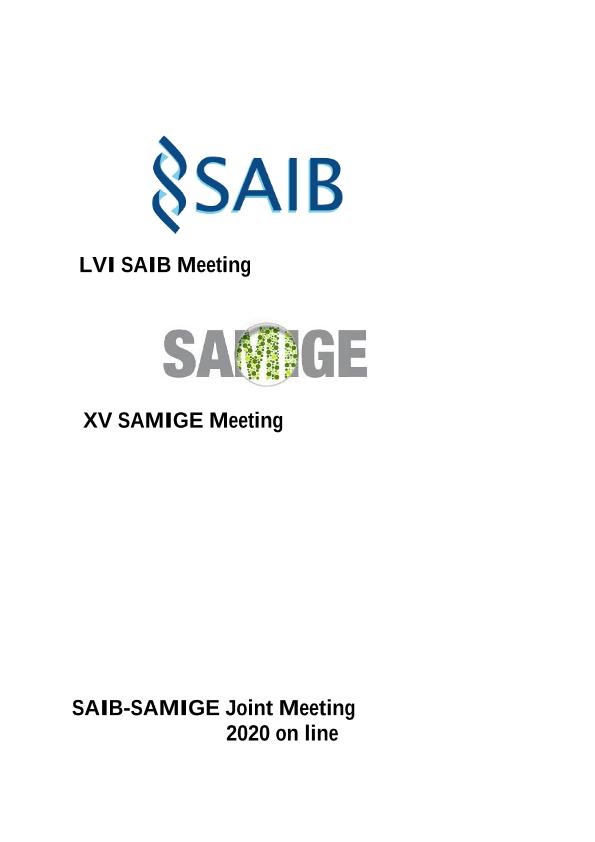Mostrar el registro sencillo del ítem
dc.contributor.author
Correa Aragunde, Maria Natalia

dc.contributor.author
Nejamkin, Andres

dc.contributor.author
del Castello, Fiorella Paola

dc.contributor.author
Foresi, Noelia Pamela

dc.contributor.author
Lamattina, Lorenzo

dc.date.available
2023-11-06T15:22:25Z
dc.date.issued
2020
dc.identifier.citation
Expression of nitric oxide synthases from photosynthetic microorganisms improves growth and stress tolerance in E. coli; Reunión Conjunta SAIB-SAMIGE 2020. LVI Reunión Anual de la Sociedad Argentina de Investigación en Bioquímica y Biología Molecular. LVI Reunión Anual Sociedad Argentina de Bioquímica y Biología Molecular (SAIB). XV Reunión Anual Sociedad Argentina de Microbiología General (SAMIGE); Buenos Aires; Argentina; 2020; 108-108
dc.identifier.issn
0327-9545
dc.identifier.uri
http://hdl.handle.net/11336/217194
dc.description.abstract
Nitric oxide synthase (NOS) catalyzes the oxidation of the substrate L-Arginine (Arg) to produce citrulline and nitric oxide (NO). We have characterized NOS from two photosynthetic microorganisms: the NOS from the alga Ostreococcus tauri (OtNOS) and the cyanobacteria Synechococcus PCC 7335 (SyNOS). OtNOS and SyNOS possess distinct biochemical properties. OtNOS is a canonical NOS similar to animal NOS with an ultrafast NO producing activity. On the contrary, an extra globin domain present in SyNOS enzyme oxidizes over 70 % of the NO-produced to nitrate (NO3-). Here we describethe expression of recombinant OtNOS and SyNOS in Escherichia coli BL12 strain and analyze bacterial growth and tolerance to nitrosative stress. Results show that the E. coli cultures expressing OtNOS and SyNOS reach a higher OD at the exponential phase with respect to bacteria transformed with the empty vector (EV). This result correlates with higher NOS protein levels assayed by immunoblot, total protein and nitrate content in NOS recombinant strain cultures. Moreover, the expression of SyNOS and at less extent of OtNOS confers the ability to grow in minimal medium with Arg as a sole N source (and plenty C-source), suggesting that NOS enzymes are active in E. coli. The high NO producing activity reported in OtNOS correlates with the flavohemoglobin hmp induction in E. coli strain expressing OtNOS, suggesting that this strain senses nitrosative stress. Furthermore, nitrosative stress generated by the addition of 1 mM of the NO donor sodium nitroprusside (SNP) reduced growth rate (0.4-fold respect to no SNP addition) in bacterial culture expressing EV. However, the expression of recombinant OtNOS and at less extent SyNOS, attenuated SNP toxicity (0.8- and 0.6-fold, respectively, compared to no SNP addition). E. coli does not synthesize the major NOS cofactor tetrahydrobiopterin (BH4). Bioinformatics tools and ligand docking analysis were used to provide evidence supporting tetrahydromonapterin (MH4) as a possible pterin cofactor required for NOS catalytic activity in E. coli. These results open an exciting new window about the versatility of pterin cofactor working in the different NOSs dispersed in distant organisms along the life tree. In summary, our results show that NOS from photosynthetic microorganisms increases the growth and confers nitrosative stress tolerance in E. coli. Supported by AGENCIA, CONICET and UNMdP
dc.format
application/pdf
dc.language.iso
eng
dc.publisher
Tech Science Press

dc.rights
info:eu-repo/semantics/openAccess
dc.rights.uri
https://creativecommons.org/licenses/by-nc-sa/2.5/ar/
dc.subject
BACTERIA
dc.subject
GROWTH
dc.subject
NITRIC OXIDE SYNTHASE
dc.subject
OXIDATIVE STRESS
dc.subject.classification
Bioquímica y Biología Molecular

dc.subject.classification
Ciencias Biológicas

dc.subject.classification
CIENCIAS NATURALES Y EXACTAS

dc.title
Expression of nitric oxide synthases from photosynthetic microorganisms improves growth and stress tolerance in E. coli
dc.type
info:eu-repo/semantics/publishedVersion
dc.type
info:eu-repo/semantics/conferenceObject
dc.type
info:ar-repo/semantics/documento de conferencia
dc.date.updated
2022-11-09T17:31:02Z
dc.identifier.eissn
1667-5746
dc.journal.pagination
108-108
dc.journal.pais
Estados Unidos
dc.journal.ciudad
Henderson
dc.description.fil
Fil: Correa Aragunde, Maria Natalia. Consejo Nacional de Investigaciones Científicas y Técnicas. Centro Científico Tecnológico Conicet - Mar del Plata. Instituto de Investigaciones Biológicas. Universidad Nacional de Mar del Plata. Facultad de Ciencias Exactas y Naturales. Instituto de Investigaciones Biológicas; Argentina
dc.description.fil
Fil: Nejamkin, Andres. Consejo Nacional de Investigaciones Científicas y Técnicas. Centro Científico Tecnológico Conicet - Mar del Plata. Instituto de Investigaciones Biológicas. Universidad Nacional de Mar del Plata. Facultad de Ciencias Exactas y Naturales. Instituto de Investigaciones Biológicas; Argentina
dc.description.fil
Fil: del Castello, Fiorella Paola. Consejo Nacional de Investigaciones Científicas y Técnicas. Centro Científico Tecnológico Conicet - Mar del Plata. Instituto de Investigaciones Biológicas. Universidad Nacional de Mar del Plata. Facultad de Ciencias Exactas y Naturales. Instituto de Investigaciones Biológicas; Argentina
dc.description.fil
Fil: Foresi, Noelia Pamela. Consejo Nacional de Investigaciones Científicas y Técnicas. Centro Científico Tecnológico Conicet - Mar del Plata. Instituto de Investigaciones Biológicas. Universidad Nacional de Mar del Plata. Facultad de Ciencias Exactas y Naturales. Instituto de Investigaciones Biológicas; Argentina
dc.description.fil
Fil: Lamattina, Lorenzo. Consejo Nacional de Investigaciones Científicas y Técnicas. Centro Científico Tecnológico Conicet - Mar del Plata. Instituto de Investigaciones Biológicas. Universidad Nacional de Mar del Plata. Facultad de Ciencias Exactas y Naturales. Instituto de Investigaciones Biológicas; Argentina
dc.relation.alternativeid
info:eu-repo/semantics/altIdentifier/url/https://www.samige.org.ar/admin/news/files/170-TSP_BIOCELL_42376.pdf
dc.conicet.rol
Autor

dc.conicet.rol
Autor

dc.conicet.rol
Autor

dc.conicet.rol
Autor

dc.conicet.rol
Autor

dc.coverage
Nacional
dc.type.subtype
Congreso
dc.description.nombreEvento
Reunión Conjunta SAIB-SAMIGE 2020. LVI Reunión Anual de la Sociedad Argentina de Investigación en Bioquímica y Biología Molecular. LVI Reunión Anual Sociedad Argentina de Bioquímica y Biología Molecular (SAIB). XV Reunión Anual Sociedad Argentina de Microbiología General (SAMIGE)
dc.date.evento
2020-11-02
dc.description.ciudadEvento
Buenos Aires
dc.description.paisEvento
Argentina

dc.type.publicacion
Journal
dc.description.institucionOrganizadora
Sociedad Argentina de Investigación en Bioquímica y Biología Molecular
dc.description.institucionOrganizadora
Asociación Civil de Microbiología General
dc.source.revista
Biocell
dc.date.eventoHasta
2020-11-05
dc.type
Congreso
Archivos asociados
